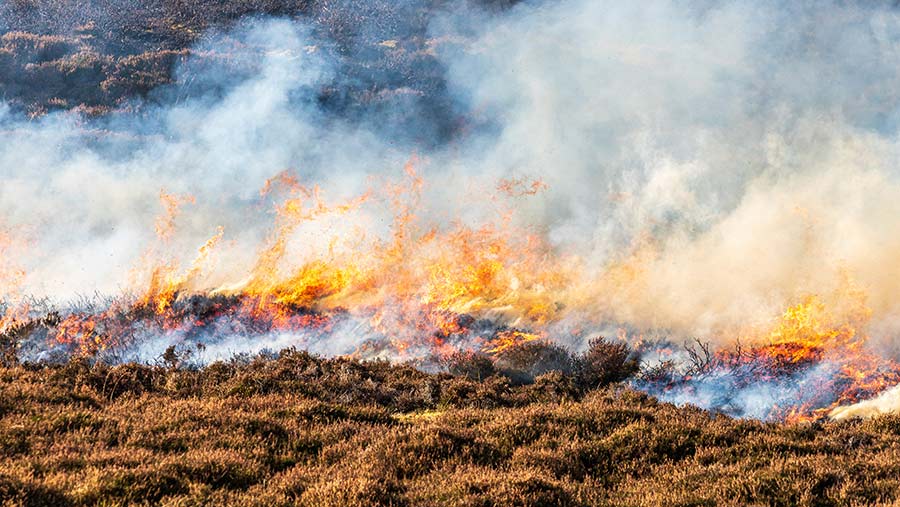Scientists criticise ‘dangerous’ attempts to ban heather burning
 © Stephen/Adobe Stock
© Stephen/Adobe Stock Policymakers have been accused of ignoring the scientific evidence when it comes to moorland burning, and of pandering to special interest groups “which regularly ignore or distort evidence in order to outlaw the practice”.
A new report from the Future Landscapes Forum (FLF), a consortium of academics and upland management experts, says controlled burning can actually improve biodiversity, enhance carbon capture and, most importantly, prevent wildfires by limiting the fuel load.
See also: Pros and cons of controlled moorland fires
“Yet the debate is neither properly informed nor evidence-based, leading to dangerous policy decisions that ignore the positive social and ecological effects of controlled burning,” say the scientists.
“We simply do not have the evidence to say that cutting, rewetting, or a cessation of vegetation management are always better at reducing the risk of wildfires, capturing carbon and maintaining biodiversity.”
Much to grouse about
The scientists blame an undue focus on grouse shooting from those who seek to ban controlled moorland burning.
“Frankly, we would be making the case for controlled burning if grouse shooting did not exist,” said FLP member and University of York professor Andreas Heinemeyer.
“But certain groups are so preoccupied with this issue that they ignore all the evidence in favour of controlled burning and the risks of the alternatives.”
Cutting heather, rather than burning it in a controlled way, presents a considerable wildfire risk, the report suggests, as the dried debris can easily ignite, setting off peat fires and releasing even more carbon.
Counter claim
But wildlife groups remain strongly opposed to moorland burning.
Joan Edwards, director of policy at the Wildlife Trusts, described the report as “the latest in a long line of half-baked excuses for maintaining the status quo”.
“There is overwhelming evidence which confirms that burning causes huge damage to peatlands and wildlife, and so undermines efforts to restore these precious habitats,” she said.
“The best thing we can do to reduce wildfire risks, provide habitat for wildlife and keep carbon stored in the ground, is to rewet peatlands. This means blocking old drainage channels, reducing livestock numbers and avoiding burning at all costs.”
Existing legislation
Meanwhile, the RSPB points to existing legislation, which prohibits the burning of vegetation in England on peat more than 40cm deep, and within designated sites, except under licence.
Vegetation may still be burnt in the English uplands and in other places, subject to current regulations.
“The RSPB supports the recent policy change, intended to protect some of England’s most precious upland habitats, particularly blanket bog,” said senior policy officer Pat Thompson.
Draft legislation in Scotland also proposes tighter regulation of burning to manage vegetation, where anyone wishing to undertake “muirburn” will soon have to apply for a licence.
